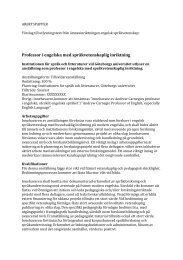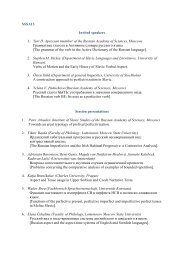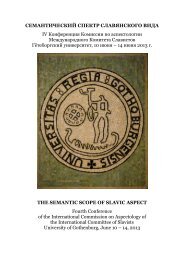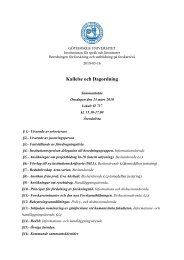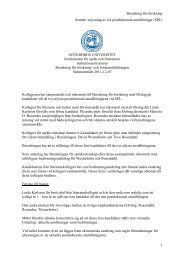ancestor of the Maori arrived in Aotearoa (today’s New Zealand) on the back of a whale. The authorIhimaera said that he intentionally changed the myth.I wrote Whale Rider based on a particular legend and that legend was of our ancestor, Paikea,who was male, who was one of the royal sons of Hawaiki who came to New Zealand on the backof a whale. So it’s a specific tribal story that applies only to Whangara and to the Maori people ofthe North Island or the out areas of New Zealand... What I did was that I subverted the original(legend) so that instead of a male riding a whale, it would be a young female riding a whale…Today, it is so important to recognize that the world has indeed changed, but it takes time fortradition to be dismantled. 14Ihimaera has made several alterations to the original myth: (1) providing an explanation tothe relationship between the ancient bull whale and the male ancestor; (2) giving a reason forthe journey to discover Aotearoa (New Zealand) by the two; (3) creating a motivation to the voluntarydeath of today’s whales; (4) changing the gender of the new whale rider; (5) forming anew relationship between the whales and the people. Through these devices, he ‘culturally translated’the old oral myth into a new one, in which the old traditions are transformed, the Maorilanguage became a hybridity of the English and the Maori, and the relationship between humansand whales turned to be heart-warming. Ihimaera’s expectations of ideal human relations, and ofthe connection between nature and people are ‘translated’ into an artistic work full of visual andacoustic images.Just as Jill Scott once wrote, ‘Myth is a mode of communication, which is by its very naturealways already a translation. There primeval texts of humanity reach both backwards and forwardsfrom and into diverse cultural narratives, illustrating social identities and complex configurationsof community’ 15 Ihimaera’s work is a vivid example showing how a myth needs tobe changed in order to maintain its vitality for future generations. It is ‘cultural translation’ thatgives verbal expressions to his imagination.Why to Translate?As the one who translated The Whale Rider into the Chinese language, I need to reflect on whyand how I translated it. Although I had lived in New Zealand for ten years before I first encounteredthe film adaptation Whale Rider (2003), I did not have much knowledge of Maori history,tradition and legends, except the commonly promoted images of Maori culture. When I watchedthe film, I was touched. Afterwards, I rushed to a bookshop to find a copy of the novella. I readit, and was again moved to tears. I returned to watch the film twice more. I felt a strong urge toshare the story with the people of the Chinese language sphere.This kind of urge has been theorized by Schleiermacher as an attempt to be understood positively,and a desire to build community and thus understanding. 16 My translation was made possibleby several factors. First, the film helped me to familiarize myself with some aspects of Maori14 A web-site titled ‘Whale Rider’ by Pacific Islanders in Communications, 2005, accessed on 16 February2011, http://www.piccom.org/home/whalerider/thebook.html15 Scott, Jill ‘Translating Myth: The Task of Speaking Time and Space’, in Fuall, Katherine M., 2004, Translationand Culture, Lewisburg, Pennsylvania: Bucknell University Press, p.58.16 Fuall, Katherine, ‘Introduction’, in Fuall, Katherine M., 2004, Translation and Culture, Lewisburg, Pennsylvania:Bucknell University Press, p. 14.<strong>Cultural</strong> Translation between Traditions, Languages and Images15
culture. Second, the film helped me understand the theme in the novella better, just as Hewsonand Martin said, ‘people might well consult a translation in order to have a better (or more complete)understanding of the original.’ 17 In this case, the film is a successful ‘translation’ of the novellafrom verbal expressions to visual images. Third, the story itself made me believe that it canbe understood and appreciated universally regardless of differences between nationalities, races,cultures and languages.In the process of translation, one of the difficulties is how to translate the Maori names ofpeople and places, and how to translate the names of plants and animals that are native to NewZealand. I find it easy to translate abstract concepts because they can be explained by addingwords. But the names will not sound like names if they carry explanatory words. Also, I had totake a balance between allowing the Chinese people to understand the foreign names based ontheir own culture on one hand, and keeping the Maori-ness of the names on the other. The readershall face a text that is both understandable and puzzling. It is the process of ‘domesticating’ theforeignness of the original text, and ‘foreignizing’ the host language—the Chinese in this case.The strategy consciously or unconsciously employed in my translation somehow echoes Schleiermacher’ssuggestion that aspects of the original language (the English and Maori) be incorporatedinto the target language (the Chinese) in order to enrich the latter, to make it open up tootherness. 18Inside the novella, the naming of the heroin is one of the most important developments of thestory. To the great-grandfather Koro, naming a girl Kahu after the primary ancestor and hero ofthe tribe is unbearably offensive. That will not only belittle the ancestor hero, but also will givean impression that a female can imitate the hero. He fiercely opposes such a naming. On thecontrary, his wife Nanny Flowers, their grandson and his wife do not see any problem in givingthe girl such a name, because they want to connect the girl with the tribe. Obviously they have adifferent cultural value from that of Koro’s. Meanwhile such a naming prophesies the future ofthe girl, just as Friedman argued, ‘<strong>Cultural</strong> identity and conflict are retracted in names given tocharacters; names parents give their children; renaming by oneself or by others; nicknames; andplace names.’ 19Because each Chinese character has its own meaning, choosing proper kanji to represent thephonetic signs of the original Maori names needs to be carefully done. In the novella, there areabundant acoustic images of songs, sounds and voices, and visual images of the ocean. It is almostimperative that I use the kanji associated with those images, such as, ge ( 歌 ), fan ( 泛 ), lang( 浪 ), tang ( 淌 ), etc. while translating the Maori names. However these images do not appear inthe Japanese translation because the katakana are used to represent the names. In other words,the Chinese translation has added more images related to the ocean and music, which the origi-1617 Hewson, Lance, Jacky Martin, 1991 Redefining Translation: The Variational Approach, London: Routledge,p.143.18 Fuall, Katherine, ‘Introduction’, in Fuall, Katherine M., 2004, Translation and Culture, Lewisburg, Pennsylvania:Bucknell University Press, p.15.19 Friedman, Sara, ‘Names in Annie Proulx’s According Crimes and Close Range: Wyoming Stories and TheirHebrew Translation’ in Fuall, Katherine M., 2004, Translation and Culture, Lewisburg, Pennsylvania: BucknellUniversity Press, p.107.Nanyan Guo
- Page 1: Cultural TranslationsProceedings of
- Page 4 and 5: PrefaceThe idea of organizing a wor
- Page 6 and 7: ContentsAcknowledgementIIPrefaceIII
- Page 8 and 9: Literature and Transculturality:Som
- Page 10 and 11: agenda of Herder, which was to figh
- Page 12 and 13: nomenon. However, until long into t
- Page 14 and 15: Tawada’s work appeared in Swedish
- Page 16 and 17: multiple interpretations. Japan is
- Page 18 and 19: Cultural Translation between Tradit
- Page 20 and 21: George P. Murdock illustrated the p
- Page 24 and 25: nal names do not necessarily have.
- Page 26 and 27: One of the functions of ‘cultural
- Page 28 and 29: PRELUDEIn 2003, an original artisti
- Page 30 and 31: planted, adopted and fused with ind
- Page 32 and 33: liest known written clues regarding
- Page 34 and 35: since there are many Asians and Pac
- Page 36 and 37: listening to and evaluating sounds
- Page 38 and 39: Ensemble, and the Moscow Pan-Asian
- Page 40 and 41: temporary Finnish folk music. 29I a
- Page 42 and 43: Although some space for improvisati
- Page 44 and 45: whom have devoted many years to ser
- Page 46: POSTLUDEBy way of conclusion, allow
- Page 49 and 50: IntroductionThe aim of this paper i
- Page 51 and 52: to discuss what role Japan was to p
- Page 53 and 54: I may be allowed henceforth to use
- Page 55 and 56: program was to promote and help stu
- Page 57 and 58: 50different of that of Millán -Ast
- Page 59 and 60: most impracticable people in the ea
- Page 61 and 62: intending to give the Book a quasi
- Page 63 and 64: understood by the West on a time wh
- Page 65 and 66: FUJIWARA Masahiko. (2008) Kokka no
- Page 67: - (2002) Cultural light, political
- Page 70 and 71: Translation, or better, linguistic
- Page 72 and 73:
one may not expect anything other t
- Page 74 and 75:
as Murakami opts for a globalized v
- Page 76 and 77:
market. 17 Another indispensable to
- Page 78 and 79:
(This is part of my doctoral thesis
- Page 80 and 81:
elieve advances man’s progress he
- Page 82 and 83:
ender the New Testament into Japane
- Page 84 and 85:
a synonym for kami. The latter is a
- Page 86 and 87:
The American school text is in the
- Page 88 and 89:
Willson Reader 46 T73 47I will not
- Page 90 and 91:
Gentlzer, Edwin & Tymoczko, Maria 2
- Page 92 and 93:
Tea ceremony or tea cult?Translatin
- Page 94 and 95:
Company (VOC), men came from differ
- Page 96 and 97:
H. Stolpe gathered items in Japan f
- Page 98 and 99:
simple presentations had negative i
- Page 100 and 101:
theticism, with its manifold bearin
- Page 102 and 103:
Kumakura, Isao (1980) 近 代 茶
- Page 104 and 105:
1. Introduction and aim of the pape
- Page 106 and 107:
main character and the caller doesn
- Page 108 and 109:
not” and ”at present” that ha
- Page 110 and 111:
match this name, a sea as artificia
- Page 112 and 113:
I John Gabriel BorkmanHenrik Ibsen
- Page 114 and 115:
his dream during the 1870s, when ca
- Page 116 and 117:
make a decision. But it turns out t
- Page 118 and 119:
Ôgai’s change of translation str
- Page 120 and 121:
Behind every utterance lies two mot
- Page 122 and 123:
a large group of persons be gathere
- Page 124 and 125:
The “Territory of Translation”
- Page 126 and 127:
八 十 日 間 世 界 一 周 :
- Page 128 and 129:
heuristic tools, especially conside
- Page 130 and 131:
Left: Photo of Kawashima Chūnosuke
- Page 132 and 133:
Burlington Gardens is in London (Ro
- Page 134 and 135:
門 アリ 入 リテ 見 レバ
- Page 136 and 137:
scene seems to be merely one of man
- Page 138 and 139:
Niwa Jun’ichirō’s Spring Tale
- Page 140 and 141:
The text is full of detailed descri
- Page 142 and 143:
where the narrative voice does not
- Page 144 and 145:
The reason the “territory of tran
- Page 146 and 147:
Translating the Trip Around the Wor
- Page 148 and 149:
ForwordI have been working on my do
- Page 150 and 151:
clining though. By the end of 1980
- Page 152 and 153:
幸 い 神 の 怒 りは 鎮 ま
- Page 154 and 155:
The Public Sphere as Deliberation o
- Page 156 and 157:
and absence of hierarchy would have
- Page 158 and 159:
was used much like we would use “
- Page 160 and 161:
outcasts and bandits - were suppose
- Page 162 and 163:
cal sense, the arena where particip
- Page 164 and 165:
society” and in which “there wa
- Page 166 and 167:
sic formulations, the public sphere
- Page 168 and 169:
はじめに日 本 統 治 下 の
- Page 170 and 171:
似 地 一 下 一 下 拽 那 鼻
- Page 172 and 173:
ということから、 古 丁
- Page 174 and 175:
の「 序 」で、 大 東 亜
- Page 176 and 177:
3.1 翻 訳 と 満 洲 国 語 政
- Page 178 and 179:
取 り 入 れを 主 張 する
- Page 180 and 181:
文 化 の 翻 訳 としての「
- Page 182 and 183:
史 性 にも 留 意 すべきだ
- Page 184 and 185:
て、 渦 巻 きよりほかは
- Page 186 and 187:
変 わらないということも
- Page 188 and 189:
訳 語 と 新 語 から 見 る
- Page 190 and 191:
しは「 無 為 」や「 本 性
- Page 192 and 193:
思 想 を 基 礎 として、
- Page 194 and 195:
って「 物 理 上 哲 学 」
- Page 196 and 197:
し、まさにはこの 時 期
- Page 198 and 199:
意 譯 : 理 學 、 性傅 汛
- Page 200 and 201:
柴 田 昌『 增 補 訂 正 英
- Page 202 and 203:
一 八 七 七 年 、 文 部 省
- Page 204 and 205:
日 中 友 好 の 象 徴 「 鑑
- Page 206 and 207:
と 指 摘 した。成 吉 思
- Page 208 and 209:
をあげている。さらにま
- Page 210 and 211:
に 請 ひて 出 家 を 求 む
- Page 212 and 213:
この 時 奉 請 の 十 師 等
- Page 214 and 215:
歴 史 小 説 『 天 平 の 甍
- Page 216 and 217:
点 」が 生 じたと 指 摘
- Page 218 and 219:
まず、 昨 今 、 活 発 に
- Page 220 and 221:
2、 従 来 の 比 較 文 学 (c
- Page 222 and 223:
普 遍 理 論 を 適 用 し、
- Page 224 and 225:
ス・テグネル(Esaias Tegnér,
- Page 226 and 227:
に 満 ちる「 生 命 」に
- Page 228 and 229:
う 形 をとって 展 開 した
- Page 230:
学 が 大 学 で 展 開 して



